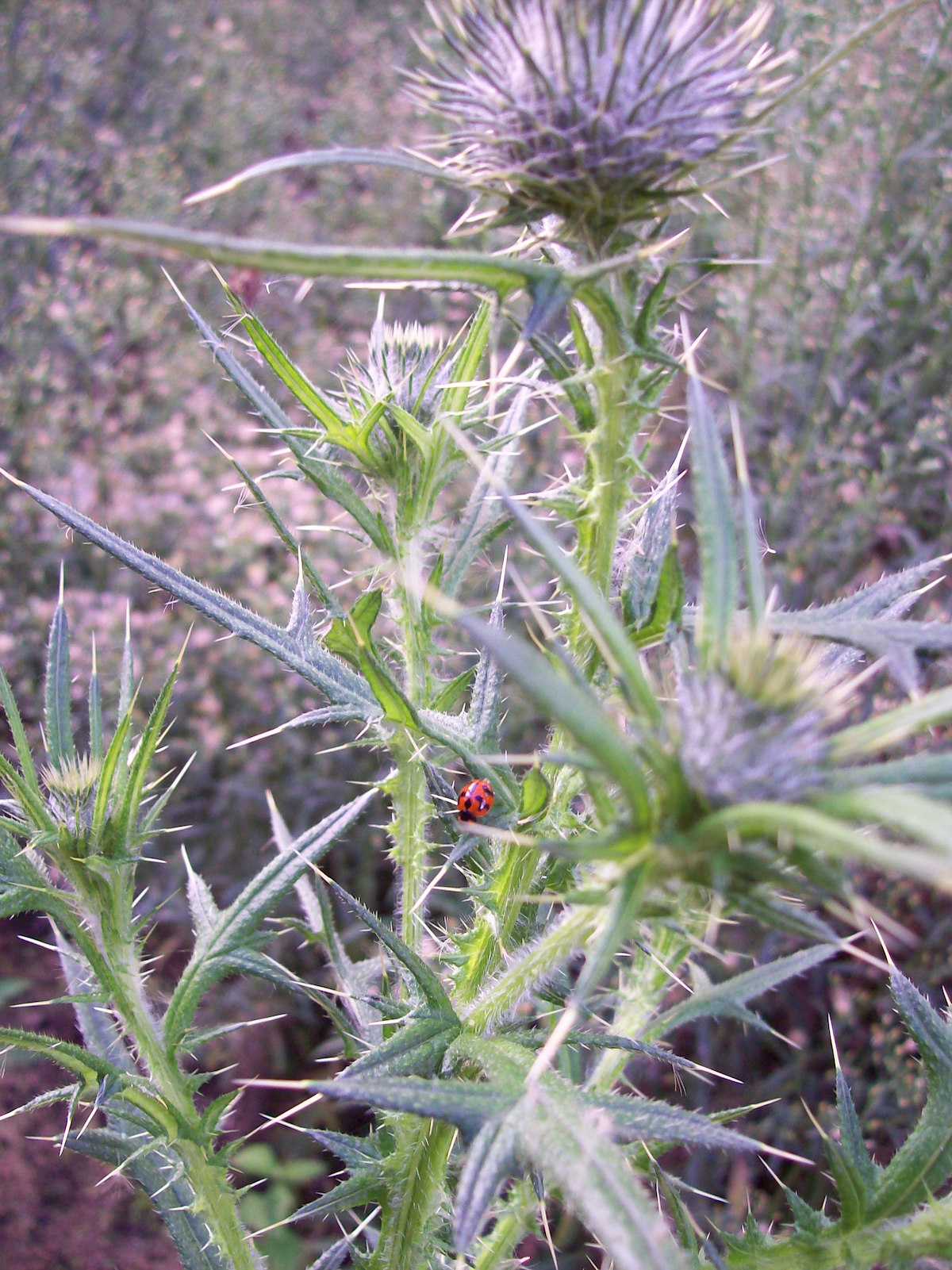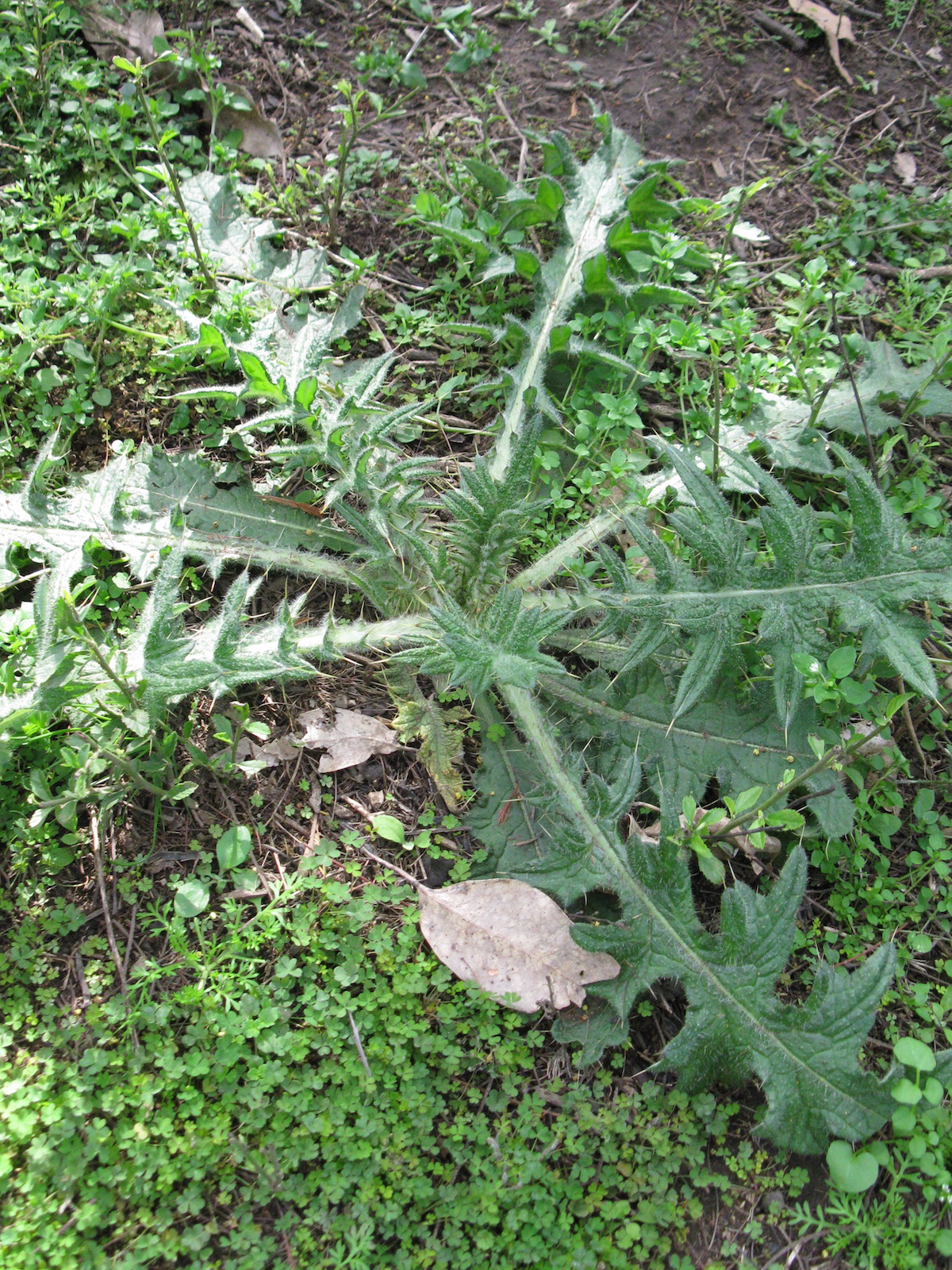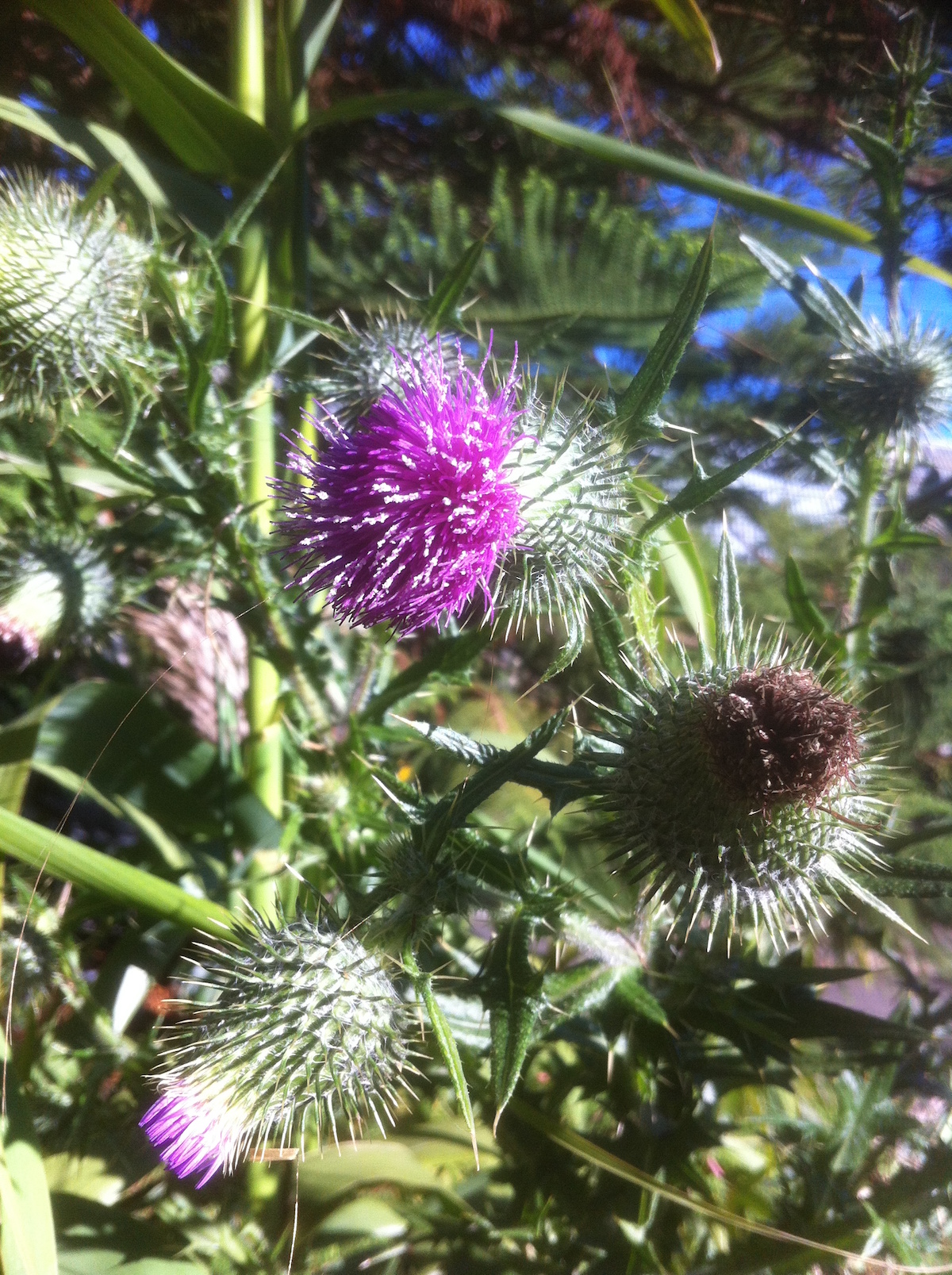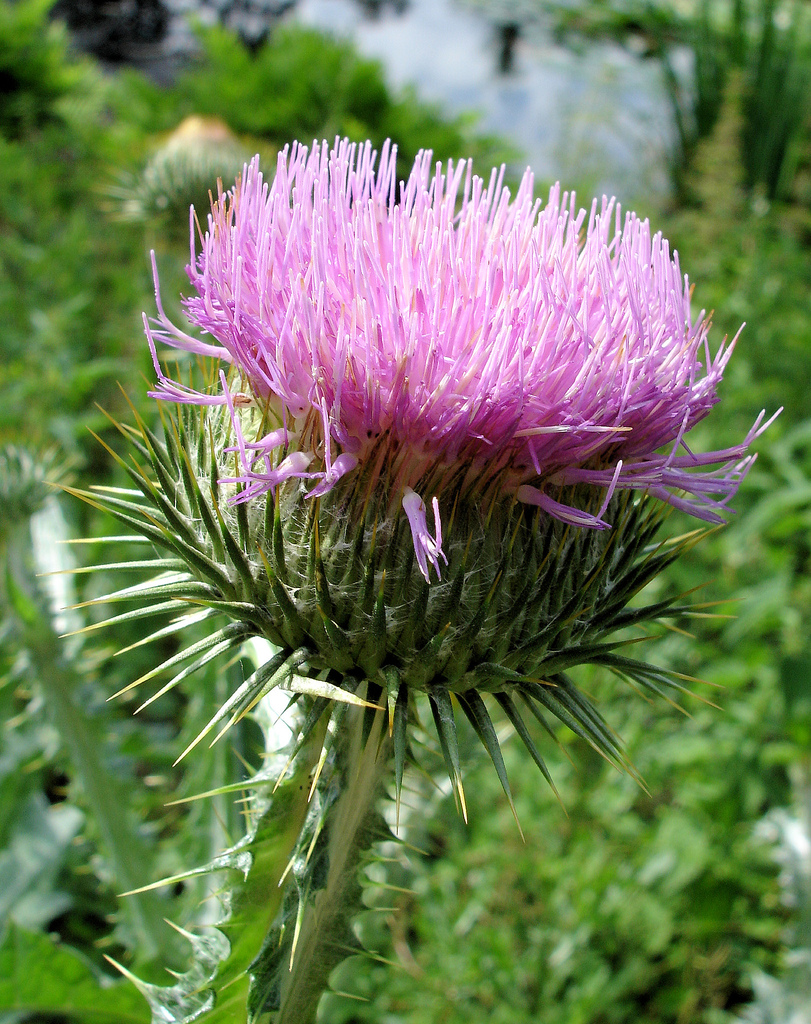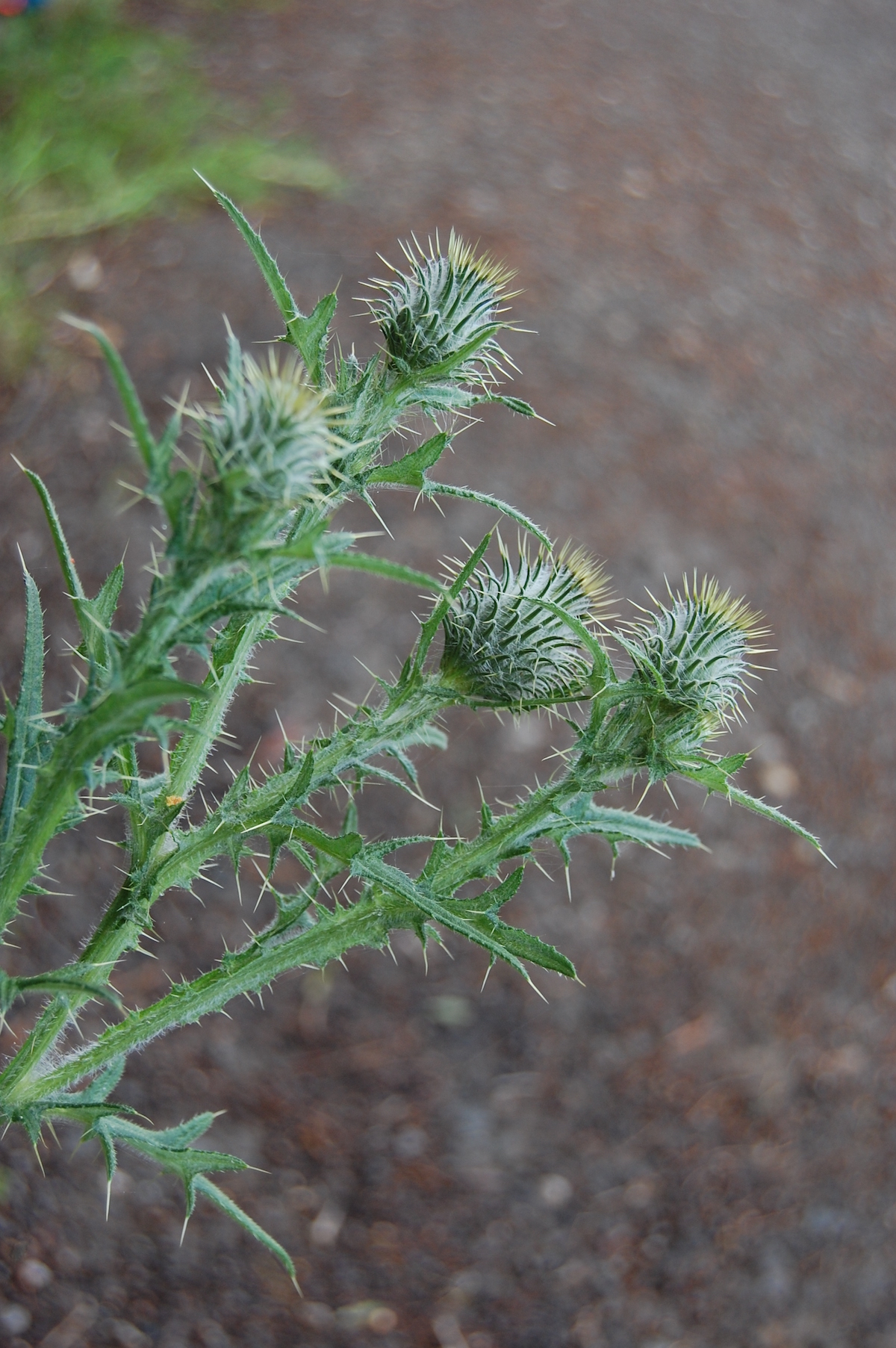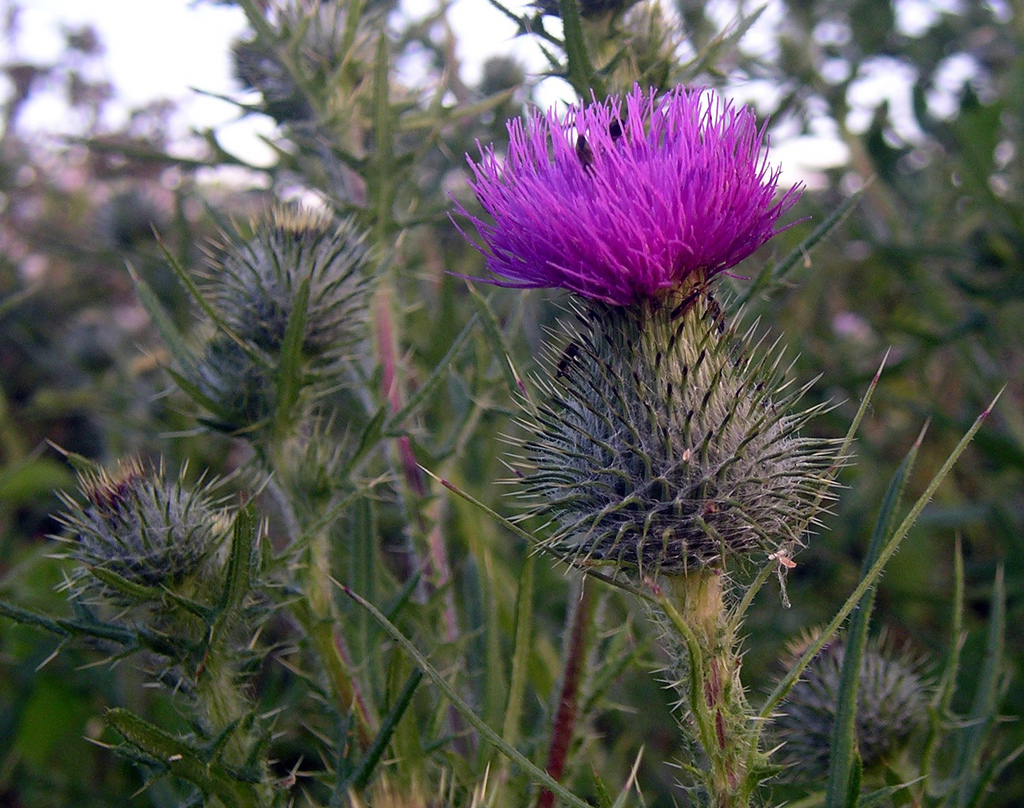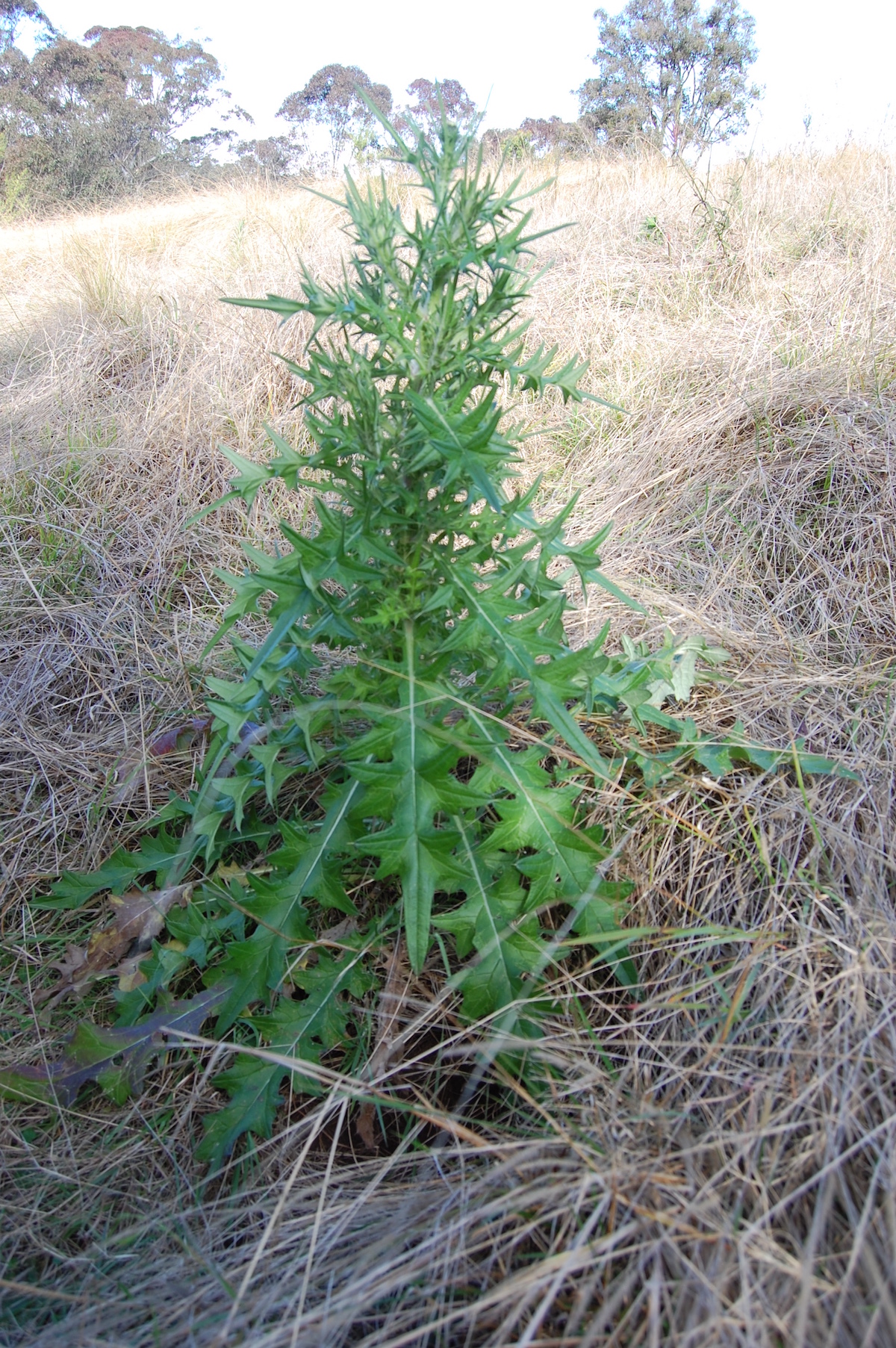In season now: scotch thistle
Love them or hate them, the thistles are here, again.
One of the early risers -as soon as the seasonal rains come in- is the ubiquitous scotch thistle, Cirsium species.
This is a most hated weed as it grows prolific all over Australia (and indeed the rest of the world), so much so that it was the first legally declared weed in the colonial history of this country. The first legislation ever written about plants on this side of the world dates back to 1852, when the state of South Australia passed a law to prevent the distribution of the plant. This was deemed necessary as it caused much pain to sheep grazers: the spiky seed heads getting stuck in sheep wool causing wool faults.
There are several plants in the Cardueae tribe of the daisy family referred to as Scotch thistles, this post here refers to the Cirsium arvense and Cirsium vulgare, both common weeds in Australia.
Scotch thistle takes his name from the folkloric value bestowed on the plants in Scotland, where the bright purple flower is the national floral emblem. Over there the thistles tell a different story, one of pride and strength.
The legend goes that one night, at a time when hoards of Norsemen used to pillage the Scottish shores, a raiding army were about to ambush a small village. In approaching the victims, one of the Norsemen stepped on thistles and the pain was so intense that the screams awakened the whole valley, preventing the pillage.
Another story tells of the Romans, when on the way up north the British isles decided to stop the conquer two thirds through, built Adrian's wall, and declared anything north of it to be inhospitable and undesirable. Apparently, the fact they wore sandals to battle had lots to do with it and rather than marching on thistle's fields, they decided to hold back on their plans.
Now, all good and fierce, but scotch thistle is also edible, and it sports a few medicinal properties too, so here we go.
Origins: Europe, North Africa, naturalised in Australia
Uses: Young leaves can be cooked after soaking overnight in salt. The stems can be peeled and then steamed or boiled. I loved them raw, harvesting the stalk of the advanced plants before they go to flower. The tap roots can be eaten raw or cooked, also of young thistles that have not flowered yet. The dried flowers are a rennet substitute for curdling milk. The seeds are occasionally eaten roasted.
Medicinal: The roots and a decoction of the plant is used as a poultice on sore jaws. A hot infusion of the whole plant has been used as herbal steam for treating rheumatic joints. A decoction of the whole plant has been used both internally and externally to treat bleeding piles.
And so much more. Check this link from wikipedia, or this from Plants For A Future>
Or just watch this below. It's the famous scene in Braveheart the film: the gift of the thistle.


